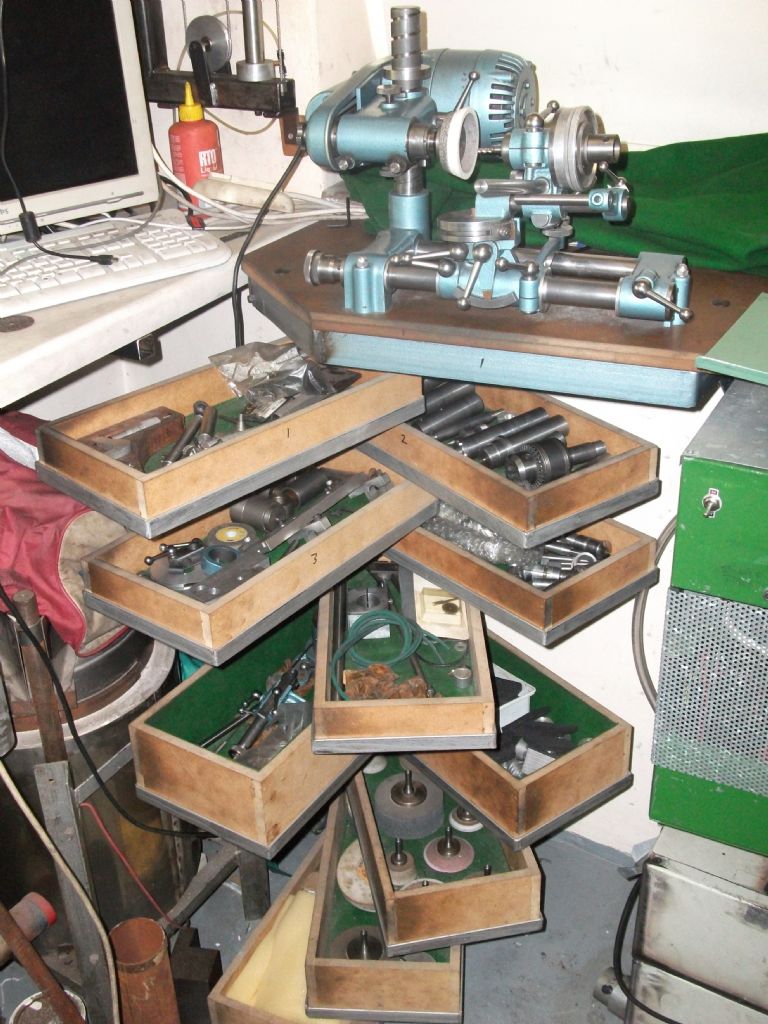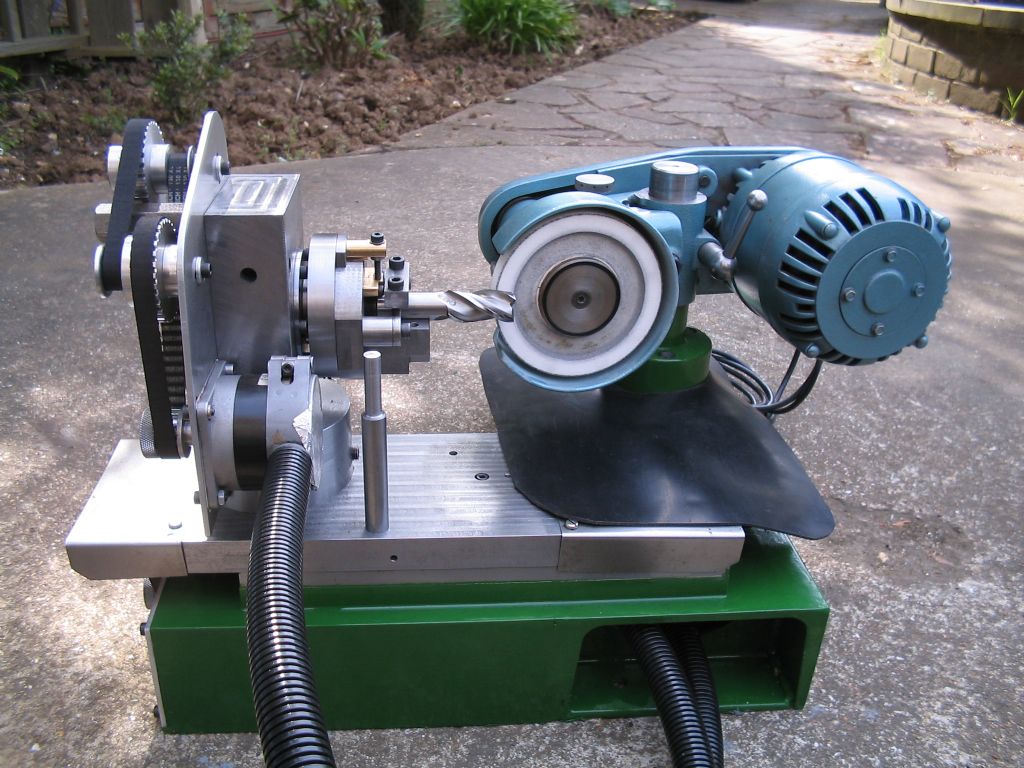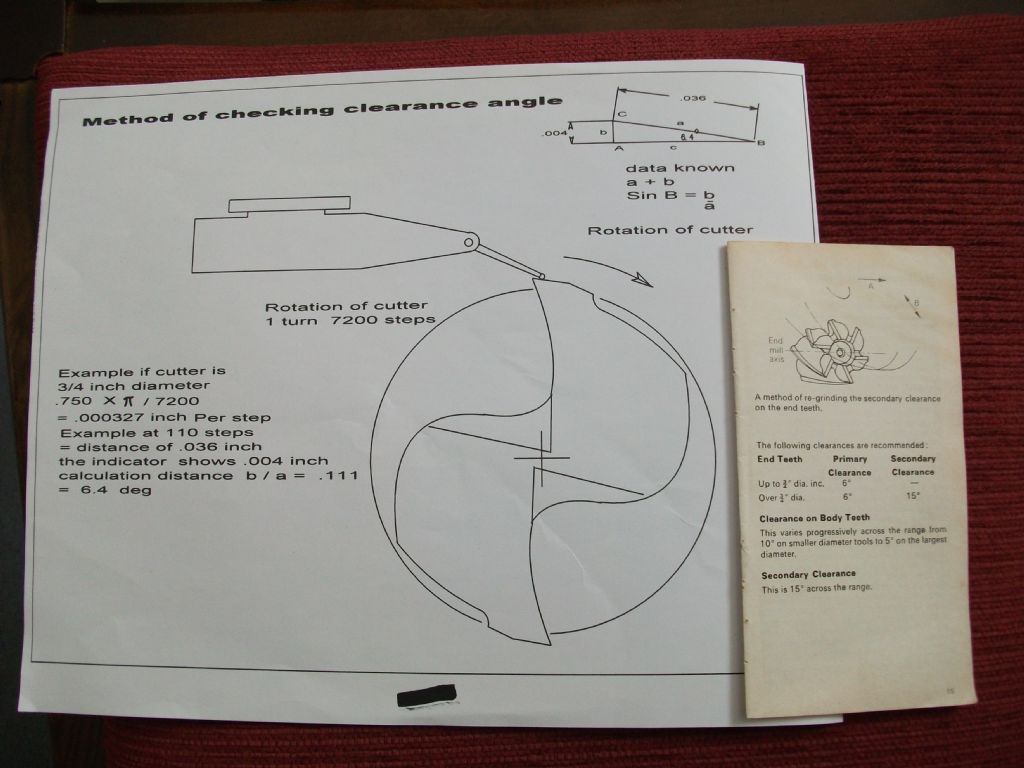Posted by Emgeere”> 12/02/2019 10:04:39
John
Nice looking Quorn and a very well planned nest of swing out
drawers, is that your design ?
When grinding along the flutes of milling
cutters I thought the cutter should be ground
on the periphery of the wheel but above centre to
provide back clearance, how do you grind flute back clearance ?
Emgee
Just a matter of space saving ,some angle iron supports hold
the wooden trays on a single strut.
The photo shows in the foreground a post that is secured to the
table, this is a zero reference to the workhead axis,using a
dti the tip of the cutter is set to a zero position using
this reference.
Looking at the photo rotating the cutter anti-clockwise
increases the angle from zero to the desired amount .The
grinding wheel is at a shallow angle relative the the work
axis ,as can be seen by the black line around the edge the
point of contact is small as it should be.
Early on when i first made and used this machine this is
how i would set up,now i use the same basic method but grind
first the secondary clearance. The Quorn book seems to show
the primary clearance as 6 deg ,in a Dormer handbook this is
shown as " Clearance on body teeth , this varies progressively
across the range from 10 deg on smaller diameter tools to 5 deg
on the largest diameter . Secondary clearance ,this is 15
deg across the range".
Setting 15 deg on the machine ,20 motor steps = 1 deg ,rotating
the work shaft 300 motor steps sets the 15 deg.
When the cutter is ground, the secondary clearance can be
measured on the machine as in the photo diagram ,since from
this the true angle is known it is a simple matter to rotate
the cutter to set the primary clearance angle.
Page 94 of the Quorn book makes reference to grinding
on the periphery of the wheel.
John
HughE.








